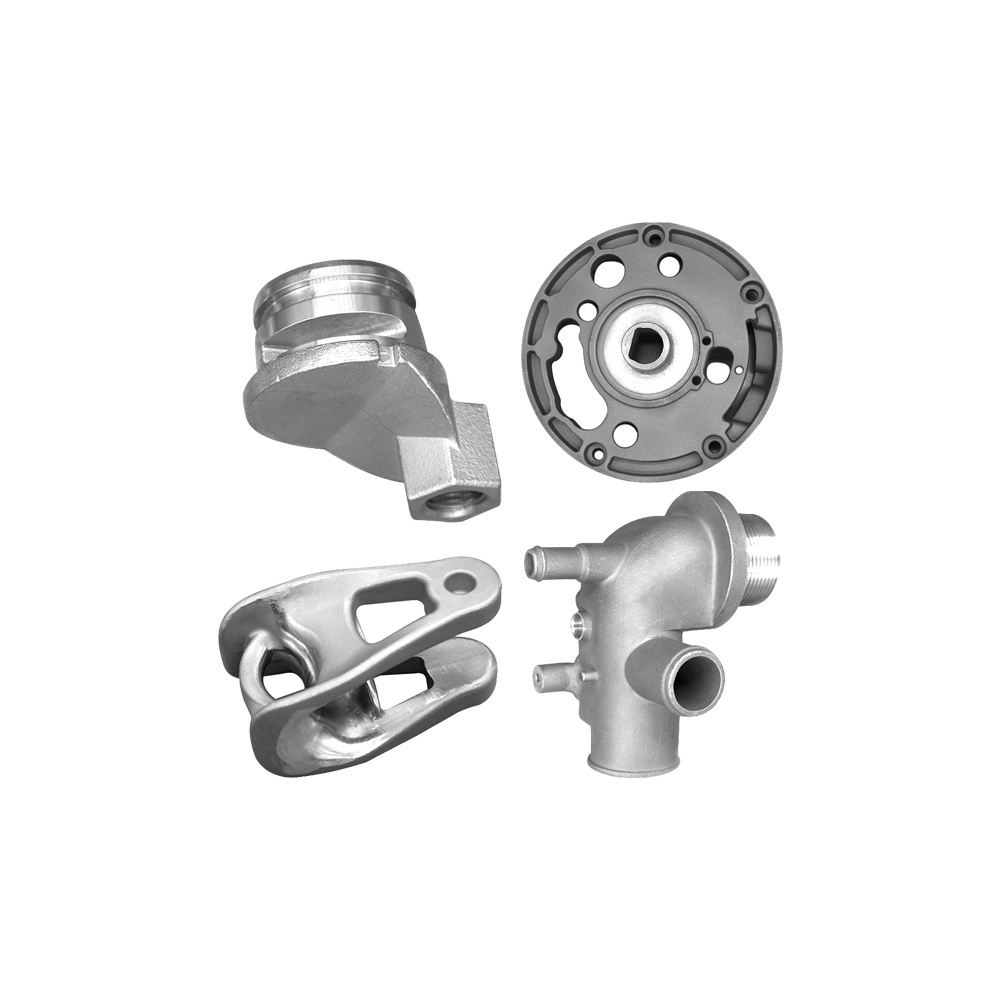 Esperanto
Esperanto
 Shqiptare
Shqiptare
 Euskara
Euskara
 Zulu
Zulu
 Latinus
Latinus
 Cymraeg
Cymraeg
 தமிழ்
தமிழ்
 Slovak
Slovak
 Slovak
Slovak
 Afrikaans
Afrikaans
Find Your Fit: How to Choose the Right Orthopaedics Fittings for You
Release time:
2025-08-02
Source:
Find Your Fit: How to Choose the Right Orthopaedics Fittings for You
Table of Contents
- Understanding Orthopaedic Fittings
- Types of Orthopaedic Fittings
- The Importance of Proper Fitting
- Factors to Consider When Choosing Orthopaedic Fittings
- Consulting a Professional
- How to Measure for Orthopaedic Fittings
- Maintenance and Care of Orthopaedic Fittings
- Frequently Asked Questions
- Conclusion
Understanding Orthopaedic Fittings
Orthopaedic fittings are specialized medical devices designed to support or enhance the function of the musculoskeletal system. These fittings can range from braces and splints to custom-made orthotics. Understanding their purpose is crucial for anyone experiencing joint, bone, or muscle issues. They serve to alleviate pain, stabilize injuries, and improve mobility, making proper selection vital for effective treatment and recovery.
Types of Orthopaedic Fittings
There is a wide variety of orthopaedic fittings available to address diverse needs. Here, we explore the primary types:
Braces
Braces are designed to support joints during movement. They can be used for conditions like arthritis or after an injury. Common types include:
- **Knee Braces**: Stabilize the knee joint and prevent further injury.
- **Ankle Braces**: Provide support and reduce swelling after sprains.
- **Back Braces**: Offer lumbar support for those with lower back pain.
Splints
Splints are rigid supports that immobilize and protect an injured area. They are often used in acute injuries or post-surgery recovery.
Orthotic Footwear
Custom orthotics can be made to fit inside regular shoes, enhancing comfort and support. They are particularly beneficial for individuals with flat feet or high arches.
Prosthetics
For those who have lost limbs, prosthetic fittings allow for regained mobility and function. They require careful customization and fitting to ensure comfort and usability.
The Importance of Proper Fitting
Choosing the right orthopaedic fittings is not merely a matter of comfort; it directly impacts health outcomes. A poor fit can lead to:
- **Worsened Pain**: Ill-fitting devices can exacerbate existing pain and discomfort.
- **Increased Risk of Injury**: A lack of proper support might lead to further injuries.
- **Decreased Mobility**: An improper fit can restrict movement, leading to reduced activity levels.
Investing time in selecting the right orthopaedic fittings is essential for long-term health and mobility.
Factors to Consider When Choosing Orthopaedic Fittings
When selecting orthopaedic fittings, consider the following factors to ensure the best choice:
1. Type of Condition
Identifying the specific condition you are dealing with is the first step. Different conditions require different types of support.
2. Level of Activity
Your lifestyle plays a significant role in the type of fitting you need. Active individuals may require more durable, high-performance devices.
3. Material
The materials used in orthopaedic fittings can affect comfort and durability. Look for breathable, lightweight materials that provide adequate support without causing irritation.
4. Size and Adjustment Features
Ensure the fitting is adjustable and available in various sizes. A snug but comfortable fit is crucial for effective support.
5. Cost and Insurance Coverage
Consider your budget and what insurance may cover. While quality fittings can be an investment, various solutions are available to fit different financial situations.
Consulting a Professional
Before making a purchase, it is wise to consult a healthcare professional, such as a physical therapist or orthopaedic specialist. They can provide valuable insights and recommendations tailored to your needs. A professional assessment can help you understand the severity of your condition and guide you toward the most suitable fittings.
How to Measure for Orthopaedic Fittings
Accurate measurements are essential to ensure a proper fit. Here is a step-by-step guide:
Step 1: Gather Necessary Tools
You'll need a measuring tape, a notepad, and a pen.
Step 2: Measure Key Areas
Depending on the type of fitting, measure the following:
- **For Knee Braces**: Measure the circumference around the knee.
- **For Ankle Braces**: Measure around the ankle and the foot's arch.
- **For Back Braces**: Measure around the waist and lower back.
Step 3: Consult Size Charts
Once you have your measurements, refer to the manufacturer's size chart. Each brand may have different sizing guidelines, so it’s crucial to check.
Step 4: Test the Fit
If possible, try the fitting on before purchasing. Ensure that it provides adequate support without being too tight or restrictive.
Maintenance and Care of Orthopaedic Fittings
To prolong the life of your orthopaedic fittings and maintain their effectiveness, adhere to the following care tips:
1. Clean Regularly
Follow the manufacturer's instructions for cleaning. Most fittings can be wiped down with a damp cloth, while others may require more thorough cleaning.
2. Inspect for Wear and Tear
Regularly check for signs of damage or wear. Replace fittings that show significant signs of deterioration.
3. Store Properly
When not in use, store your orthopaedic fittings in a cool, dry place. Avoid exposing them to direct sunlight, which can degrade materials.
4. Follow Usage Guidelines
Adhere to the recommended usage times and conditions to avoid compromising your fittings' effectiveness.
Frequently Asked Questions
1. How do I know if I need orthopaedic fittings?
If you experience persistent pain, discomfort, or mobility issues in your joints or limbs, it is advisable to consult a healthcare professional.
2. Can I buy orthopaedic fittings online?
While many fittings are available online, it is essential to ensure you have accurate measurements and ideally consult with a professional first.
3. How long do orthopaedic fittings last?
The lifespan of orthopaedic fittings varies based on the material, usage, and care. Generally, they should be inspected regularly, and you should replace them when signs of wear appear.
4. Are custom orthotics worth the investment?
Custom orthotics can significantly improve comfort and support for specific foot conditions, making them a worthwhile investment for many individuals.
5. Can I use orthopaedic fittings during physical activities?
Most orthopaedic fittings are designed for use during various activities. However, ensure that the fitting is suitable for your specific sport or activity to avoid injury.
Conclusion
Choosing the right orthopaedic fittings is a critical step toward enhancing mobility and improving the quality of life. By understanding the types available, considering personal needs, and consulting professionals, you can make informed decisions better suited to your health. Take the time to measure correctly and maintain your fittings to ensure they serve you well for years to come. Remember, investing in the right orthopaedic fittings is an investment in your health and well-being.
Orthopaedics Fittings
Related News
2025-12-14 12:00
Understanding CNC Turning and Milling Parts: A Comprehensive Guide for Precision Manufacturing
CNC (Computer Numerical Control) turning and milling are essential processes in the realm of precision manufacturing. These techniques are widely employed in the machining industry for producing intricate components that meet strict tolerances and specifications. Understanding the fundamentals of CNC turning and milling parts can enhance your knowledge of how these processes contribute to quality
2025-12-09 12:10
A Comprehensive Guide to Household Appliances Maintenance: Keep Your Home Running Smoothly
A Comprehensive Guide to Household Appliances Maintenance Household appliances are the backbone of modern living, providing convenience and efficiency in our daily routines. However, just like any other mechanical devices, they require regular maintenance to function optimally. In this guide, we will explore various household appliances, their maintenance needs, and practical tips to extend their
Let’s Talk
We can help you figure out your needs.




